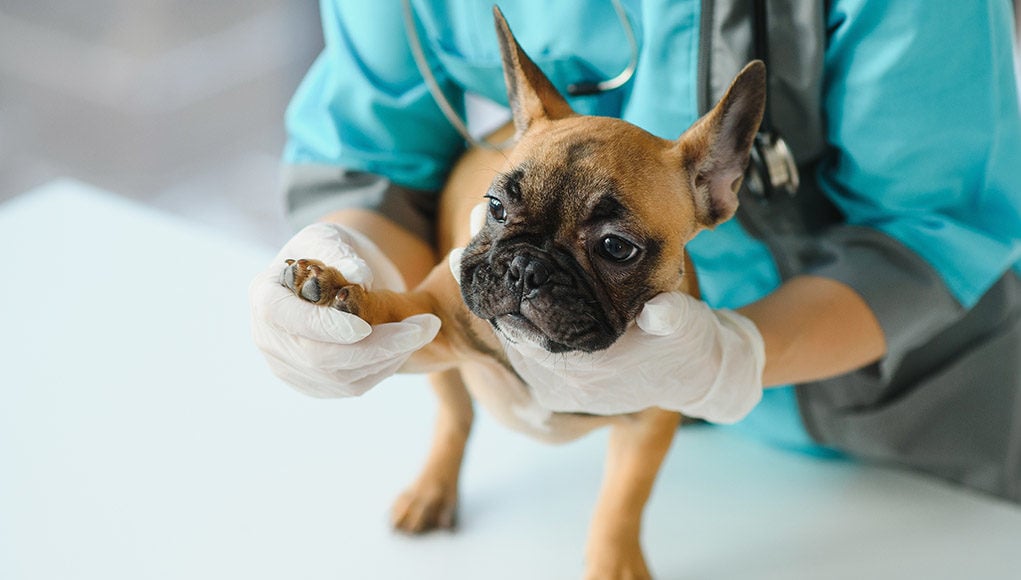Table of Contents
Before discussing what Liposarcoma in dogs is, let’s first take a look at what is soft tissue sarcoma.
Sarcoma ‘sarkoma’ means fleshy growth in Greek. The primitive mesoderm gives rise to the connective tissues of the body and the soft tissue sarcoma includes those tumors that arise from extraskeletal connective tissue.
There are several soft tissue sarcoma cases found in dogs. Canine Liposarcoma is one of them.
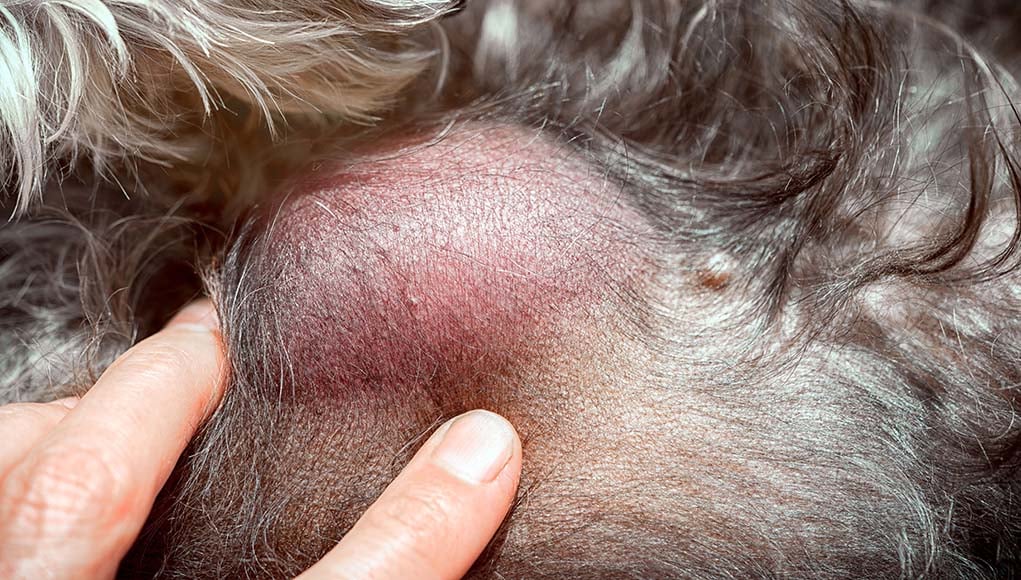
What is Liposarcoma in Dogs?
A liposarcoma in dogs is a form of soft tissue sarcoma wherein the immature or mutated lipocytes. It forms in the fat layer under the skin or deep soft tissues.
Liposarcoma is usually painless and grows gradually over time. Some Liposarcoma in dogs grows rather quickly and has a low prognosis.
Adipose tumors, bodily tissue that is used to store fats, are almost recognized as benign but Liposarcomas are usually malignant.
Since Liposarcomas permeate localized areas of the tissue, it is more likely to reoccur but not metastasize.
Liposarcomas are more cellular and are usually composed of most of the anaplastic or immature cells.
Symptoms of Liposarcoma
Sarcomas often appear slowly so early diagnosis may be difficult unless examined and tested. Symptoms in Liposarcoma are quite similar to other Soft Tissue Sarcoma which is a lump that is solid and moveable.
Some Liposarcomas are quite large in shape. When it becomes too big, it may not be as moveable as it is normally.
Liposarcoma may appear anywhere from the face to the body since the body is covered in fat cells as well.
More common areas for Liposarcomas would be:
- Abdominal wall
- Chest
- Knee
- Limbs
Changes in physical movement due to the placing of the sarcoma can also be a symptom. If the Liposarcoma is found in the knee or limb area, subtle changes in walking may be observed.
Some symptoms may also include loss of appetite, lethargy, and rapid deterioration in health.
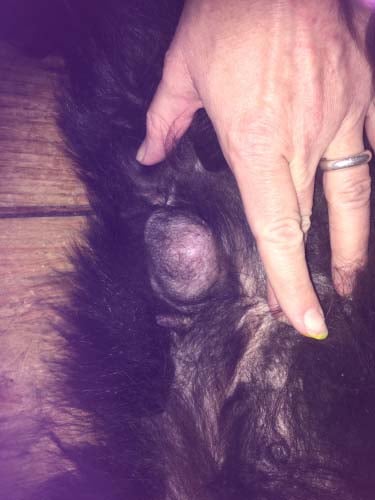
Histology in Liposarcoma
When a dog is diagnosed with Liposarcoma, their lipocytes, the fat-storing cells, are often found in various distinct forms. The nuclei are also rather darker than the average.
It is also seen in some cases that an abnormal number of lipocytes are found in the nuclei.
Liposarcomas in dogs are quite invasive in local regions where it starts. It has a low percentage of metastasizing but it has the potential to grow.
Even after going through aggressive surgery, recurrence of Liposarcoma is eventual. It may regrow after a month or half a year.
Histology observances for Liposarcoma include:
- Heterogeneous attenuation
- Nodular/ globular/ mass hyperattenuating component
- Mineralization
- Regional Lymphadenopathy
- Prevalence of soft tissue
In a study published by Radiology and Ultrasound, 17 animals who were studied with Liposarcomas have similarities in their mass shape.
Their Liposarcomas are round to oval in shape with defined margins, unlike Lipomas which had irregular shapes most of the time.
Histology finds that Liposarcomas consist of heterogeneous attenuation in the cells, and dissimilar components of the cell like lipocytes found in the nuclei. Nodules also reduce their function over time.
Regional lymphadenopathy was present in all 17 cases as well. As a body's natural reaction, lymph nodes swell as the immune system is working its way to clear out the infections or invading viruses.
But the further enlargement of lymph nodes should be immediately addressed as it may be a sign of metastasizing.
Another common component is its fat prevalence, as it’s to its name but some had soft tissue as its prevalence.
Most soft tissue sarcomas are palpable and moveable, while some large masses may not be as moveable normally.
Liposarcoma masses are often above normal-appearing skin switch hair but some may be ulcerated or have gone through necrosis.
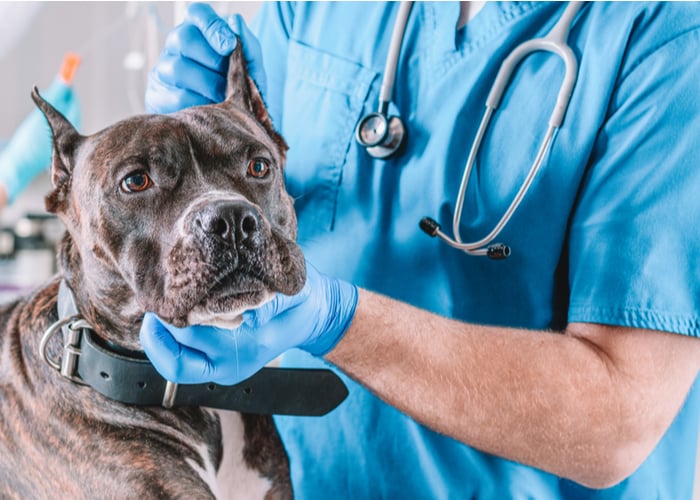
Liposarcoma in Dogs: Causes
Most causes of Liposarcoma are still unknown. Some research finds that it may due to congenital issues and some may develop through environmental factors.
Some sarcomas develop due to skin trauma like in felines, injection-site sarcoma or post-vaccination.
How to Test Liposarcoma in Dogs
Let’s discuss the possible tests to determine if your dog has Liposarcomas. The test to determine Liposarcoma is the same as Sarcomas.
Liposarcomas in dogs is a rare disease. It’s not like an ear mite where we can have plenty of cases daily or weekly.
For Liposarcomas, the possible tests to determine this diagnosis could be the following:
Fine Needle Aspiration Biopsy
The fine needle aspiration biopsy can be a quick way to determine if there are any malignant tumors in dogs and cats. It is fast, cheap, and well tolerated by animals.
This procedure can sometimes give a preliminary diagnosis of sarcoma. But an aspirate can’t provide the tumor type or histologic grade.
That’s why a tissue biopsy is needed for us to find the definitive diagnosis and define the grade.
However, since these tumors are made of connective tissue and hold tightly together, fine needle aspiration is not enough. That’s why some vets operate with a larger gauge needle or use suction from a 5 or 10-cc syringe.
Excisional Biopsy
Excisional Biopsy is a surgical biopsy that the main goal is to extract all affected tissue for examination. This biopsy is usually used and is crucial for cancer treatment.
Radical Excisional Biopsy requires general anesthesia since it is a much more intrusive procedure.
In this biopsy, the cancerous part of the tissue is removed along with a margin of healthy tissue to make sure that cancer will not return.
If the needle aspiration is not enough, Excisional Biopsy can be performed. It is an option used if the mass is small and in a surgically accessible area.
Incisional Biopsy
Incisional Biopsy is the opposite of Excisional Biopsy. As we’ve discussed above, Excisional Biopsy is applicable when the whole affected part is removed.
However, in Incisional Biopsy, some part of the affected tissue or cancer is left behind. A few examples of Incisional Biopsy procedures in dogs are Punch Biopsy, Jamshidi Needle Biopsy, and Tru-Cut Biopsy.
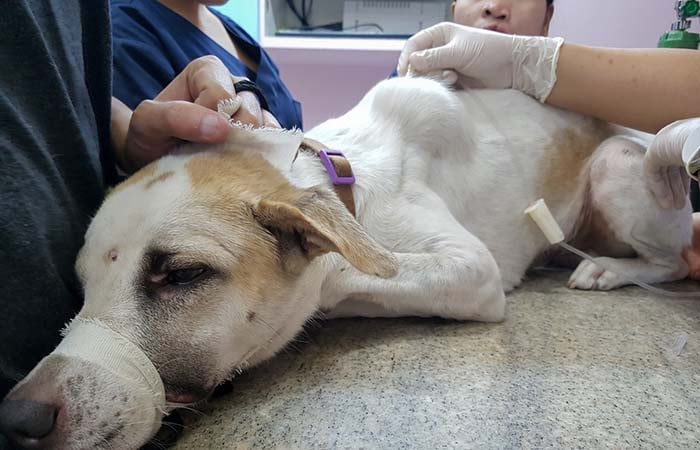
Treatment of Liposarcoma in Dogs
Liposarcoma in dogs treatment focuses on compressing the spread in the localized region where the Liposarcoma has grown.
Although in treatment, full recovery is not viable with one surgery. It is the best option to repress its area when the recurrence transpires.
Aggressive Surgery
Since tumors are locally invasive, one of the recommended treatments is aggressive surgical excision. Certain regions require aggressive surgery like an amputation to be cured.
When it comes to the risk of regrowth after surgery, this all depends on the tumor grade. Surgery can be the proper treatment for low or intermediate-grade tumors.
Radiation Therapy
Radian Therapy is recommended after surgery for incompletely excised tumors. It is also done pre-operatively if the removal of some tumors will not obtain clear margins.
Radiation Therapy is a daily treatment of radiation for at least 4 weeks. Every session or treatment is assisted under general anesthesia.
Also, this therapy is only 75-80% successful in controlling regrowth in patients.
Chemotherapy
On the other hand, chemotherapy is done for high-grade tumors that have the best chance to spread. Generally, it is ineffective in treating measurable tumors.
Sometimes, injectable chemotherapy drugs are also recommended. But the benefits of these drugs on extending life are unknown.
Another example of a treatment plan is Metronomic chemotherapy with daily oral cyclophosphamide or chlorambucil and a non-steroidal anti-inflammatory drug.
According to one study, metronomic chemotherapy delayed tumor regrowth in dogs.
Liposarcoma in Dogs: Frequently Asked Questions
How common is liposarcoma in dogs?
Liposarcoma is a rare disease in dogs and cats. There are a few cases of Liposarcoma worldwide.
The causes and treatment are still indefinite but experts are further analyzing the possible origins and treatments of Liposarcoma in dogs.
How fast do Liposarcomas grow in dogs?
Liposarcoma’s growth rate varies. Some dogs may have it grown rapidly for only a week or two but in the common case, it gradually grows over the years. That’s why it is commonly diagnosed later.
How long can dogs live with liposarcoma?
Dogs are reported to live at least 6 months to 4 years after being diagnosed with Liposarcoma. Since grade and treatment vary, each case is different from the other.
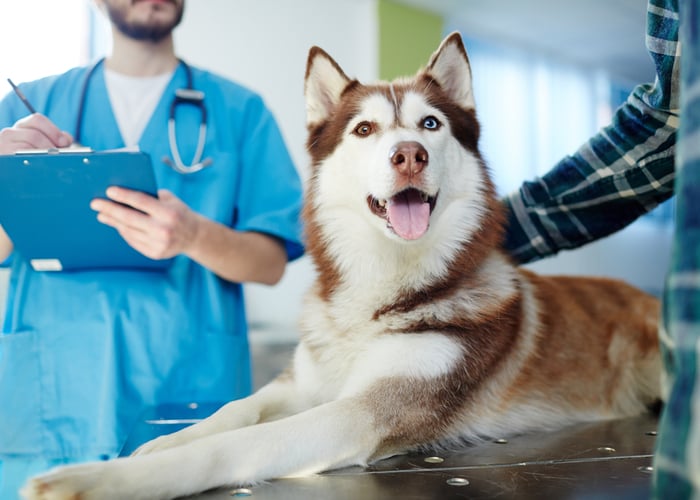
Liposarcoma in Dogs Summary
Canine Liposarcoma is a form of soft tissue sarcoma. Liposarcoma forms in deep soft tissues.
Some cases of sarcomas are still rare and under supervision. Liposarcoma is one of the rare cases in the Soft Tissue Sarcoma category.
Most cases of Liposarcoma have survival rates of 6 months to at least 4 years, depending on their severity.
If there are any symptoms from the dog or known cases from the parent or family of the dog, owners should have their dogs physically checked and tested regularly to address the Liposarcoma immediately.
Observance and immediate response are necessary as Liposarcoma in dogs is malignant. Although it is known to spread only along the localized region, it may still spread when it transpires after treatment.


